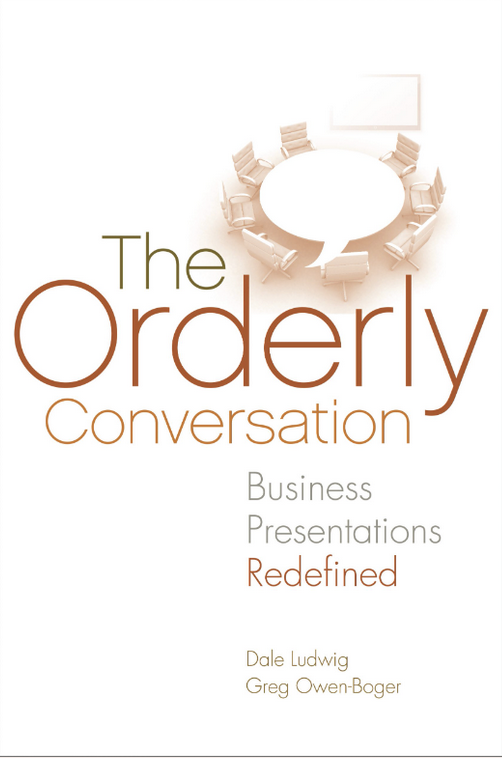
- Dale Ludwig Leadership
Confidence is One of the Fifteen Facets of Executive Presence
This article is one in a series focusing on Executive Presence and how leaders can meet their potential through improved communication. Executive Presence is defined by Suzanne Bates in her book “All the Leader You Can Be: The Science of Achieving Extraordinary Executive Presence” as “The qualities of a leader that engage, inspire, align, and move people to act… By understanding how your intentions as a leader match up with perceptions, you can learn how to flex your style to gain trust, build alignment, lead change, inspire performance, and drive executional excellence.”
This article focuses on Confidence, one of the 15 facets that make up a 3-dimensional leader.
Click here to gain a greater understanding of (a) executive presence in general and (b) the other facets that make up a well-rounded leader.
What is Confidence?
Bates describes Confidence, one of the fifteen facets of executive presence, as “being self-assured in decision making and action; ready to accept the risk and responsibility for timely action.” People with a high level of Confidence are decisive, yet also open to dissent. They demonstrate faith in their own abilities, as well as their team’s. Confident leaders are able to take risks because they trust their own judgment and that of their team.
Two Layers of Confidence
Some facets in the Bates model have two layers. Confidence is one of them. The first layer is about the confidence you feel in your own abilities. This Self-Confidence makes leaders self-assured and accountable for the results and consequences of their actions. The second layer is Social Confidence, which is based on the faith you have in your team and your willingness to take responsibility when their actions don’t meet expectations. “The buck stops with me” is a phrase that comes to mind.
How Confidence Makes People Feel
People with a high level of Confidence earn the trust of the people around them because they appear thoughtful, observant, and able to take action. Their Confidence isn’t limited to themselves. They also believe in the capabilities of the people around them. Others feel that
- You hold yourself accountable for your decisions, thereby earning my trust and respect.
- I appreciate that you make the effort to be concise and efficient.
- I feel that you respect my abilities.
- I feel comfortable working with you.
- I feel like a crucial member of our high-functioning team.
Not Enough Confidence
Someone who lacks Confidence may seem indecisive or overly careful. They may blame others if something goes wrong. The effect of this is
- People feel frustrated and impatient.
- The process of doing business seems to grind to a halt.
- People may feel that they are not trusted to do the work well.
Specific Behaviors to Improve Perceptions of Confidence
Here are some things you can do to improve the impressions you make in terms of Confidence.
- Be willing to talk about difficult issues without delay.
- Hold yourself accountable for the results and the consequences of decisions made.
- Take ultimate responsibility for mistakes made by members of your team.
- Be self-assured enough to consider dissenting views.
- When facilitating a meeting, listen carefully and without judgment.
- Be clear, concise, and direct.
- Speak up when others don’t.
- Avoid weak language and excessive qualifiers.
- Communicate belief in the team.
Too Much Confidence
When someone exhibits too much of a particular facet, it can become an overstrength. An overstrength often results in negative perceptions. Here are some downsides of an overstrength in Confidence.
- Exaggerated sense of one’s self-worth
- Reckless decision-making
- Making others feel left out
A Story About Too Little Confidence
Lionel, who is in his mid-60s, has been with a global manufacturing company since graduating from college with an engineering degree. He started on the front line in the factory and quickly worked his way up thanks to his ambition, can-do attitude, and an eventual MBA from one of the best business schools in the country. After having been the EVP of Operations at their largest manufacturing and distribution center for 11 years, he was promoted to Chief Operating Officer for the entire company. He took the role with hesitation because he didn’t feel quite ready, but circumstances – including the untimely departure of his direct manager – demanded he leap feet first into the C-Suite.
In his previous role, he led with Confidence. He met or exceeded every metric. However, his new role requires a broader, more strategic view of the company, including leading functions he never had to worry about, such as finance, procurement, sales, marketing, HR, and others.
What made him so good at his previous role at the plant level is not what’s going to make him successful as COO. Thankfully, along with his promotion came a leadership coach who was well-suited to the task of helping Lionel through this process. When his coach asked him what concerns he had, Lionel explained that while he considers himself to be a confident leader, he had little confidence in his ability to lead functions he knows little about.
His coach helped him understand that his self-confidence was no longer going to be enough; he had to shift his focus to his team of direct reports and learn to trust them.
Together, they worked on a strategy to get to know each of the directors and division heads and begin the process of developing long-term strategic relationships with each. Once trust is established across the board, Lionel will be able to get his footing and successfully lead Operations across the globe by expressing Confidence in his team.
Some Facets Ride Together
Often, when we lean into particular facets (or pull back from them), other facets “come along for the ride.” As Lionel settles into his new role as COO and executes the plan he and his coach devised, he’ll need to lean into other facets. Through the process of meeting with the other leaders and establishing relationships with them, he’ll exercise his skills in Humility, Practical Wisdom, Vision, Intentionality, Inclusiveness, and Interactivity.
Final Thoughts About Confidence
Confidence is in the Substance dimension in the Bates model, which means that it is a facet cultivated over your career that helps build credibility and is relevant to your social role as a leader. These facets include the knowledge and wisdom you have developed, your ability to synthesize information and apply it to the here and now, as well as your ability to connect with and respond to the people you lead.
About this Series of Articles
For a full understanding of executive presence and the model we follow, read this overview article.
To learn more about specific facets within the executive presence model, click a link below. In these articles, we examine how Bates defines each facet and the communication skills and behaviors that support them.
| Character | Substance | Style |
|---|---|---|
| Authenticity | Practical Wisdom | Demeanor |
| Integrity | Confidence | Intentionality |
| Concern | Composure | Inclusiveness |
| Restraint | Resonance | Interactivity |
| Humility | Vision | Assertiveness |
If you’d like to learn more or explore executive presence coaching options for yourself or your team, click here to schedule a call.

